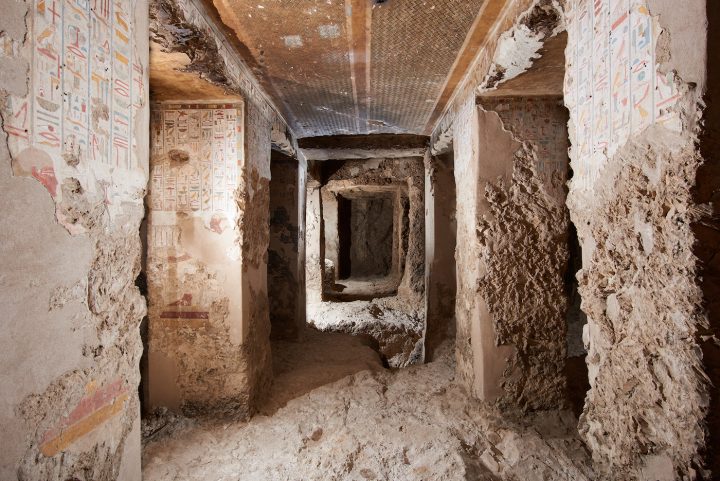
About 3,000 years ago, a woman from Upper Egypt had her right big toe removed. Her anatomical anomaly may have been lost to time, had it not been for the discovery of her mummy in 1997, with a wooden toe still attached to the skeletal foot. Smoothly sculpted and complete with a neatly trimmed toenail, the artificial toe is likely one of the oldest prosthetic devices ever made. It has resided in Cairo’s Egyptian Museum since being excavated from its owner’s tomb near Luxor, but is currently undergoing new study by researchers from the museum, the University of Basel, and the University of Zurich.
Thanks to the team’s use of microscopy, X-ray technology, and computer tomography, we now have new insight into the toe’s functionality, materiality, and fabrication process. Like today’s prostheses, it was acutely tailored to its wearer — it was even refitted for her foot several times, the researchers found. More than a cosmetic accessory, the toe consists of three sections — two of wood, one of leather — and would have helped the woman walk, which attests to the skills of an artisan with intimate knowledge of human physiognomy.

“So far no prosthetic devices are known from this period,” Dr. Susanne Bickel, an Egyptologist at the University of Basel, told Hyperallergic. “The level of sophistication makes this a unique piece.”
The team has not yet identified the toe’s owner, but she’s known to have been a priest’s daughter who likely had to have the digit amputated because of a disease. (Researcher Jacqueline Finch has said that she is Tabaketenmut, who may have suffered from diabetes that caused ischemic gangrene in her toe.) Archaeologists found her mummy while excavating a cluster of rock-cut tombs on the hillside of Sheikh Abd el-Qurna in Western Thebes, where Egyptian elites were buried as early as the 2nd millennium BCE. Research into the ancient cemetery, funded by the Swiss National Science Foundation, is ongoing.
The rare prosthesis was surely an object for someone wealthy, having been meticulously designed by an expert craftsman. As Bickel said, its maker “was presumably not a ‘specialist in prosthetics,’ but an artisan who knew how to work wood and to combine wooden elements with other materials.
“He perhaps used knowledge generally applied in the production of, for example, furniture or weaponry for the preparation of this device,” she explained.

Aside from wood, the toe was made with leather, rope, and textile bands, which its owner would have used to attach it to her foot. As Finch described, it features holes through which a series of bands tie its pieces together; it even has a hinge, perhaps to mimic the movement of the metatarsophalangeal joints. The woman would have even been able to wear it with sandals, and while it likely would have eased her mobility, it also would have helped her foot appear natural to others, at a glance.
“Balance might indeed have been an important reason for wearing such a device,” Bickel told Hyperallergic. “The idea of having a complete body, which was central to Ancient Egyptian minds, might have been a reason for seeking an aesthetic aspect to it.”

Preserved largely because of the region’s dry climate, the toe predates other known prosthetic body parts by centuries. The next oldest one is yet another toe from Egypt, the 600 BCE digit known as the Greville Chester toe (named after the 19th-century reverend who acquired it) that now resides in the British Museum. Unlike the Cairo toe, this one — made of glue-soaked linen and coated with plaster — probably only served a cosmetic purpose. And what was once thought to be the oldest prosthesis is a bronze and wooden leg from a Roman grave in Capua, Italy. Dating to 300 BCE and once kept at London’s Royal College of Surgeons, the so-called Capua leg was destroyed during a World War II air raid. The British Science Museum currently houses a copy, made between 1904 and 1915.
As for the Cairo toe, it’s still undergoing study. The researchers have not yet published their findings and are currently exploring its functionality by testing out replicas of the prosthesis made with similar materials. They also hope that future analysis of CT scans will lend further insight into how the ancient Egyptian lady lost her big toe.

No hay comentarios:
Publicar un comentario